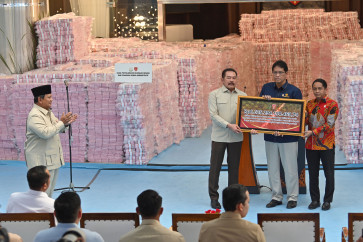Popular Reads
Top Results
Can't find what you're looking for?
View all search resultsPopular Reads
Top Results
Can't find what you're looking for?
View all search resultsUNESCO recognizes nine Balinese dances
A Balinese dancer performs during a social event in Bali
Change text size
Gift Premium Articles
to Anyone
A Balinese dancer performs during a social event in Bali. (thejakartapost.com/Raditya Margi)
Nine traditional Balinese dances have been recognized as part of the world's intangible cultural heritage following a UNESCO session in Namibia on Wednesday.
Balinese dances included on the list were the Barong Ket, Joged Bumbung, Legong Keraton, Topeng Sidhakarya, Baris Upacara, Sanghyang Dedari and Rejang dances, as well as the Wayang Wong and Gambuh dance dramas.
"We are very pleased with the recognition; it enables Bali to receive protection in terms of traditional dance preservation as well as economic benefits in the future," said Bali Cultural Agency head Dewa Putu Beratha on Wednesday night as quoted by Antara news agency.
During the UNESCO session, Indonesia's proposal regarding the dances reportedly ranked 18th among a total of 35 countries.
"The nine dances represent Balinese dance as a whole based on their historical concept, function and style," said Dewa.
According to Dewa, the Rejang, Sanghyang Dedari and Baris Upacara dances represented the Wali dance, which is usually performed during processions. Meanwhile, the Topeng Sidhakarya dance and Gambuh and Wayang Wong dance dramas are part of the Bebali dance, known as a semi-sacred and ceremonial dance. The Legong Keraton, Joged Bumbung and Barong Ket dances are a representation of the Balih-Balihan dance that serves social and entertainment purposes.
The Wali dance is said to have originated between the eighth and 14th centuries. The Bebali dance and Balih-Balihan dances are believed to have come from the 14th-19th century and 19th centuries, respectively.
"The community has actively played an important role in preserving these traditional dances, especially the Wali dance. Meanwhile, the Bali provincial administration and its city and regency administrations should increase their role in preserving the Bebali and Balih-Balihan dances during tourist events," said Dewa.
A Balinese art group led by I Wayan Dibia was scheduled to perform the Nawasari dance at the UNESCO meeting, but was forced to cancel due to transit visa issues in South Africa. (kes)(+)










